by Bill Poole | Sep 15, 2025 | Sales, Strategy
Why revenue struggles might not be a sales problem and what to do instead
When revenue slows down or growth plateaus, it’s natural to look at your sales team (or lack thereof) and think, “We need to fix sales.”
But not every revenue problem is a sales problem.
Often, what feels like a sales bottleneck is something deeper: a lack of clarity about the market you serve, the value you deliver, or the message you put out. And if you throw a salesperson into that confusion, you’re not solving the problem. You’re just making it more expensive.
A Costly Misstep: A Real-Life Example
A couple of years ago, we worked with a sharp founder who ran a successful custom software development firm. His team built SaaS platforms, mobile apps, and system integrations, and they did it well. The company had grown through hustle, referrals, and a solid track record in the healthcare space.
Eventually, growth leveled off. The founder had ambitious goals and knew he needed a more scalable way to grow. He also wanted to be in a position to sell the business someday, and he knew that buyers don’t place much value on companies that depend on the founder to drive all new revenue.
So he reached out for help.
We helped him clarify his Ideal Client Profile (ICP), refine his message, and build a sales system anchored in strategic partnerships. He was especially strong in healthcare, and while hesitant to focus too narrowly, he agreed to lean in. Then he made a sales hire to run the system.
And right after that… he pivoted.
He had just wrapped development on a niche software product he’d been building quietly for some time, and he decided to shift the entire business toward selling that product instead of custom development.
The result?
The sales system, messaging, ICP, and the expensive hire were all misaligned with the business strategy. Not intentionally, but the consequences were real.
The most costly mistake wasn’t the pivot. It was hiring a salesperson before confirming that the go-to-market strategy was clear and committed.
The Hidden Trap: Solving the Wrong Problem
This happens more often than you’d think.
On the surface, it looks like sales isn’t working. But what’s really broken is market clarity.
Some warning signs:
- The team isn’t aligned on who your best-fit clients are.
- Wins feel like one-offs rather than repeatable patterns.
- Your message doesn’t land, or prospects don’t “see themselves” in it.
- New reps struggle to gain traction, or can’t reproduce your success.
These aren’t sales execution issues.
They’re focus issues.
And no amount of hustle or sales talent can overcome that.
What Predictable Revenue Really Requires
The best closers in the world can’t create consistent results if they’re selling the wrong thing, to the wrong people, with a muddled message.
Here’s what needs to be true before a sales hire will succeed:
- A clearly defined Ideal Client Profile
Everyone on your team, not just sales, should know who your business is for and who it’s not.
- An offer that solves a real, painful problem
One that your clients value, buy repeatedly, and talk about.
- A message that resonates
It should cut through the noise and make prospects say, “Yes, that’s me.”
- A go-to-market strategy your team can align with
If you change your strategy every few months, you’re not ready to scale it.
When these pieces are in place, sales becomes scalable.
When they’re not, hiring salespeople becomes a costly experiment.
Ask Yourself: Is Sales the Bottleneck — or Is It Something Deeper?
Here are a few questions to help you find out:
- Do we know exactly who we’re trying to attract and why they buy from us?
- Are our wins consistent and repeatable?
- Does our message clearly connect with the right people?
- Could we plug someone else into our current sales system and expect success?
If you’re not answering “yes” to most of those, you may not have a sales problem.
You may have a strategy problem, and that’s the first thing to solve.
The Good News? You Can Fix This
Clarity is something you can build. You can:
- Tighten your ICP.
- Talk to your best clients.
- Refine your messaging and story.
- Align your go-to-market strategy before you scale it.
And once that foundation is strong, then it’s time to make the hire.
✅ Want to Know If You’re Truly Ready?
Take our Scalable Sales Readiness Checkup, a short, practical tool designed to help you assess whether you’re actually ready to hire, or if there are some foundational steps to take first.
You’ll walk away with a clear view of:
- What’s working
- What’s missing
- And how to fix it
👉 Take the Checkup Now

by Bill Poole | Aug 6, 2025 | Sales
Hiring a salesperson can feel like a milestone — a sign your business has “made it” and is ready to grow to the next level.
But here’s the truth: hire too early, and you could end up with less growth, more headaches, and a big hit to your bottom line.
It’s a bit like hiring a chef before you’ve stocked the kitchen. Sure, they might be talented, but without the ingredients, equipment, and menu, they’re going to spend more time standing around than serving up results.
It’s not about hiring sooner or later — it’s about hiring when you’re truly ready.
The All‑Too‑Common Scenario
There are lots of reasons that prompt the need for a sales hire.
At the top of the list? Building the value of your business for the day you eventually exit.
Every business owner exits — either by selling, passing it on, or closing the doors. A more valuable, transferable business gives you more options and a better outcome when that day comes.
Other common growth drivers include:
- Wanting more predictable revenue to smooth out the ups and downs.
- Expanding into new markets or launching new offerings.
- Increasing profits to reinvest in people, equipment, or marketing.
- Freeing up your own time from day‑to‑day selling so you can focus on strategy.
These are all smart, strategic goals.
The trouble starts when the next thought is:
“I’ll just hire a salesperson. Problem solved.”
On paper, it seems like the quickest path — bring in someone to take sales off your plate, and watch revenue grow.
But without the right foundations in place, that hire often walks into a game with no playbook, no warm‑up, and no scorecard. They spend most of their time figuring things out (or waiting for direction), and before long…
- You’re frustrated they’re not bringing in deals.
- They’re frustrated because they don’t know where to focus.
- And you’re still in the middle of sales anyway — now with a payroll burden.
Risks & Implications of Hiring Too Early
Hiring a salesperson before your business is ready can feel like a quick win — until you realize you’ve just taken on a big expense without a clear path to results.
Here’s what often happens:
- Financial Drain – You’re paying salary, benefits, and onboarding costs long before the hire is producing enough revenue to cover their seat.
- Frustrated Sales Hire – Even talented salespeople struggle without clear targets, tools, and leads. Good ones often leave quickly.
- Lost Time – It can take months to realize the hire isn’t working, setting back your growth goals.
- Founder Still in Sales – Instead of freeing you up, you end up juggling your normal workload plus managing an under‑equipped rep.
- Confusing Clients and Prospects – Failed sales hires can leave your market wondering who they’re supposed to talk to and whether you have your act together.
The reality is simple: a salesperson isn’t a silver bullet. Without the right foundations in place, you’re setting them — and your business — up for frustration.
What Needs to Be in Place Before You Hire
Before you bring a salesperson into your business, there are four key areas that need to be solid. Think of these as a self‑diagnosis — if you can’t check these boxes, hiring now may do more harm than good.
1. Revenue Predictability & Market Fit – Is sales really the problem?
Before you assume sales is the issue, take a hard look at whether your business is truly aligned around a clear Ideal Client Profile — and whether your offering delivers proven, differentiated value in the market. If your product or service isn’t consistently winning, no salesperson can fix that.
Why it matters: Predictable revenue starts with knowing who you’re selling to and why they buy. When you have strong market fit, sales efforts are amplified. When you don’t, adding a salesperson just accelerates the frustration.
2. Scalable Message – Can someone else tell your story?
Your business needs a repeatable, non‑founder‑dependent way to start conversations with ideal clients and referral sources. This includes your value story, client journey, and a compelling “first step” offer.
Why it matters: If your sales message lives only in your head, scaling is impossible. A clear, shared story empowers others to confidently represent your business.
3. Transferable Sales System – Can someone else run the process?
A defined infrastructure to generate, track, and convert opportunities — without relying on ad hoc hustle. This includes your top‑of‑funnel processes, CRM usage, and a documented sales process that supports your growth goals.
Why it matters: Buyers want to know how future revenue will be created. Regardless of whether or not exiting is on your mind, a solid sales system makes your business more scalable and less risky.
4. Sales Execution Transferability – Can you step out of the sales seat?
Clear sales roles, effective onboarding, and a system to manage and develop sales contributors — all without the founder being the primary driver of revenue.
Why it matters: The more dependent your business is on you to close deals, the lower your valuation. Transferable execution creates freedom for you — and confidence for any future owner.
Want to Know If You’re Ready?
Before you invest in a sales hire, it’s worth taking a quick, objective look at your readiness. Our Scalable Sales Readiness Checkup will show you where you’re strong, where you have gaps, and what to tackle first so your next sales hire succeeds.
In just a few minutes, you’ll have a clearer picture of whether now’s the right time or if you should make a few key moves first to protect your investment and accelerate results.
Before You Make That Hire…
Hiring a salesperson too soon can cost you time, money, and momentum — and in some cases, it can even damage your relationships with clients and prospects.
If your ultimate goal is to build a more valuable business for your eventual exit, getting this hire right is non‑negotiable.
You’ll see where you’re ready, where you’re not, and exactly what to do about it.
Take the Checkup!

by Bill Poole | Jul 24, 2025 | Sales
Picture this: You’re the founder of a thriving business, the one who bravely took the leap, left stability behind, and convinced others—family, friends, investors, and employees—to trust this magical thing called your Vision. But now, you’re still the one closing every big deal. It might feel like a badge of honor, but let’s be real: it’s actually a shackle holding your business back.
Why? Because if the sales process depends solely on you, your business isn’t truly scalable. Whether you’re dreaming of growing exponentially, preparing to exit someday, or simply wanting your life back, your presence in every sale is lowering your company’s potential—and its value.
Let’s face it. Your business needs you to get out of your own way.
Why Founders Struggle to Let Go of Sales
It’s not just you—this struggle is real for almost every founder. You might hear yourself saying things like:
- “My clients only want to talk to me.”
- “Honestly, I’m the best salesperson we’ve got.”
- “I can just get it done faster myself.”
- “I’ll step back once I find the perfect salesperson…”
These statements are understandable, but they trap you in a loop that limits your company’s value.
The Harsh Truth: Founder-Driven Sales Hurt Your Valuation
Imagine tomorrow a buyer walks through your door, ready to acquire your business. The first question they’ll ask:
“What happens to sales if you leave tomorrow?”
If your answer is a shrug or uncomfortable silence, that deal either evaporates or your valuation plummets.
Research from the Exit Planning Institute underscores the urgency:
- 80-90% of a business owner’s net worth is usually tied up in their company, yet fewer than 20% of businesses actually sell when listed—largely because of over-dependence on the founder.
- Buyers apply discounts of 10%-30% or more to companies reliant on founders, especially when the founder holds key customer relationships.
- Businesses with clearly documented, transferable sales systems are twice as likely to attract strategic buyers and command premium valuations.
Additionally, a study by the Value Builder System found that businesses where the owner is involved in day-to-day sales tasks are significantly less scalable and have a Value Builder Score 25% lower than companies where the owner isn’t entrenched in sales operations.
Founder-Led Sales: A Bottleneck for Growth
Even if selling your company isn’t on the horizon, think about what happens when you’re stuck handling every deal:
- Your strategic vision gets sidelined because your time is consumed by sales.
- Your sales team never truly develops—they’re stuck in your shadow.
- You unintentionally build a culture dependent on you instead of nurturing a self-sufficient team.
What Buyers (and Successful Operators) Really Want
Whether a potential buyer or your future executive team is looking under the hood, they’ll be impressed by:
- A predictable pipeline that doesn’t hinge on one person (you!).
- Clearly documented sales processes that anyone on your team can pick up and run with.
- A sales team empowered to build relationships, nurture leads, and close deals independently.
- Strong systems and tools that track performance, improve coaching, and maintain visibility.
Simply put, your business must be capable of thriving without you personally handling every deal.
Your Path Out of the Sales Seat
We get it—letting go isn’t easy. It’s not about vanishing overnight; it’s about thoughtfully transitioning your role. That’s exactly why we created the Convergo Scalable Sales Readiness Assessment: a simple, powerful tool to help you see clearly how prepared you are to pass the baton.
You’ll get clarity on essential areas:
- Predictable revenue and market alignment
- Clear, scalable messaging
- A documented and repeatable sales system
- Your team’s capability to succeed independently in sales
This is your first step toward creating a more valuable and transferable business.
Life After Letting Go
Imagine stepping back from daily sales. You reclaim time to focus on high-level strategies, your team grows confident and accountable, and your business finally achieves genuine scalability.
Most importantly, your business is now more valuable because it thrives independently of you.
And remember those people who believed in you and trusted your Vision when you first took the leap? Beyond just boosting valuation, you’re now honoring the trust and commitment of everyone who supported you along the way. The sacrifices made and faith shown will finally pay off in the form of a sustainable, resilient, and successful business.
Awareness is Your Starting Point
If you’re still the central sales figure, your business isn’t scaling fully and won’t command its best valuation.
Start your journey with clarity today and discover how prepared you are to build real, lasting value.
Take the Convergo Scalable Sales Readiness Assessment to start paving the way to a more valuable business—and a more balanced life.

by Bill Poole | Jul 9, 2025 | Sales, Strategy
Your Referral Engine Isn’t Dead—It’s Idling
You’ve built a thriving company on relationships and reputation.
But lately, you’ve noticed something unsettling:
- Your aggressive growth targets loom larger than the steady trickle of warm introductions.
- Tactical marketing agencies promise a flood of leads—Google Ads, LinkedIn AI automations, the latest “demand-gen hack.”
- You test one or two. The leads arrive…and most are a mismatch. Qualifying them soaks up your team’s time. When you pause the spend, the faucet shuts off.
Sound familiar? You’re not alone.
The Pattern We See All the Time
- Early Momentum
You leaned on friends, colleagues, and a handful of A-list partners. Referrals flowed, deals closed, life was good.
- The Plateau & Panic
Growth targets rise. Referrals feel “tapped out,” so you hunt for quick wins—often expensive ads or automation playbooks frothed up on social media.
- The Cold-Lead Grind
Clicks spike, but conversations stall. You realize most strangers have no real need—or budget—for what you do best. Worse, if you cut spend, the pipeline dries up overnight.
- The Realization
You now carry two problems: non-performing marketing costs and an under-leveraged network
A Real-World Example: The Shift To An Intentional Referral System
An investment bank we work with relies on 20-30 elite attorneys, CPAs, and wealth managers for nearly every deal. The business was solid, but their new three-year plan called for doubling revenue.
They took a three-pronged approach to increase lead flow:
- Shifted to a more intentional approach to managing their “A-List” referral partners
- Investing in marketing the right way, with a content-driven, help-first approach to build trust, which both supported the intentional referral approach and generated some leads
- Added a human element to the top funnel by complementing the marketing with some outbound sales targeting
The results? Within six months, their previously bare pipeline ballooned, and they are now positioned for the 2nd half of the year.
Why Intentional Referrals Beat Reactive Ads
| Reactive Lead Gen |
Intentional Referral System |
| Expensive “pay-to-play” |
Low cost, relationship-driven |
| Leads disappear when spend stops |
Compounds over time |
| High qualification effort |
Pre-qualified, trust-based |
| Tactical, siloed |
Strategic, integrates with marketing |
Smart marketing is still vital—brand assets, SEO, content..all of these add equity to your firm. But a dialed-in referral system funds those long-term plays and keeps your pipeline healthy while they mature.
Three Questions to Ask Yourself Today
- Do my best partners know exactly who I want to meet and why it matters to them?
- Do I deliver predictable, calendar-based value to each connector?
- Can I trace last quarter’s revenue back to specific partners and activities?
If any answer is “no” (or “not sure”), there’s untapped growth sitting in your network.
Ready to Assess Your Referral Approach?
Download the Referral System Self-Assessment and get a crystal-clear score on:
- Partner segmentation and prioritization
- Value-add cadence
- Enablement assets
- Measurement and optimization
It’s the fastest way to see where simple tweaks could unlock your next wave of high-value introductions.
Grab the self-assessment now!
You don’t need another silver-bullet ad campaign. You need to tune the engine you already own. Start with your referral system and let marketing amplify, not replace, what’s been working for you since day one.

by Bill Poole | Jun 18, 2025 | Sales, Strategy
Note: This is a story built from real patterns we see all the time in entrepreneurial, service-based businesses. Sales leaders are under pressure, coaching is inconsistent, and referrals aren’t producing like they should. The good news? The technology now exists to solve these problems — and do it in a practical, people-first way.
When Taylor, the Integrator at a 25-person B2B services firm, sat down for their Q1 Clarity Break, one problem kept swirling: the sales team wasn’t scaling with the rest of the company.
They had grown steadily over the past two years — strong operations, reliable delivery, and a few rockstar client wins had moved the business forward. But sales? It was messy. Coaching happened here and there, but not predictably. New reps weren’t ramping quickly. And their best rainmaker seemed to be running on instinct more than process.
Taylor didn’t want to throw more headcount at the problem. That wasn’t how they thought. They needed leverage — and they found it in an unexpected place: AI-powered sales coaching.
The Real Problem: Sales Coaching Without Structure
Taylor’s sales leader, Jordan, was experienced and driven. But even Jordan admitted their approach was reactive:
“I’m spending more time trying to figure out what happened in deals than actually helping reps close the next one.”
Reps were sent to occasional trainings, and call shadowing happened “when possible.” But with no clear view into how reps were selling, most coaching was gut feel — not system-driven.
And it wasn’t just coaching that lacked structure. Jordan had also recently rolled out a referral initiative — encouraging reps to “work their networks” and “ask for introductions.” The effort had good intent but lacked focus. The result? Too many reps chasing too many weak connectors.
They needed something better — a way to develop salespeople intentionally and build high-value referral pipelines with purpose.
AI Turns Every Sales Interaction into Coaching Fuel
That’s when Taylor and Jordan decided to pilot a few lightweight AI tools. Nothing crazy — just tools that could help them see what was actually happening.
They implemented software that:
-
Automatically recorded, transcribed, and summarized sales calls and Zoom meetings
-
Analyzed email and CRM activity for engagement patterns
-
Flagged talk-time imbalances, missed opportunities, and stalled follow-ups
-
Connected the dots between rep behavior and results
Instead of relying on rep recollection or Jordan’s memory, they now had a living, breathing coaching dashboard.
And reps loved it too — because the feedback wasn’t generic. It was based on their real conversations. They could listen to their own calls, get suggestions, and adjust — fast.
Coaching Got Better. So Did Referrals.
This shift in visibility didn’t just improve deal flow — it brought clarity to their referral system.
Jordan had introduced a Strategic Connector strategy earlier in the year, encouraging each rep to focus on 5–7 well-positioned people who could refer high-fit clients.
But without data, it had been hard to tell who was really engaging.
Now, with AI analyzing the full spectrum of rep activity — calls, emails, meetings, CRM notes — they could see:
-
Which connectors opened or ignored emails
-
How often they were mentioned in rep activity
-
Whether those relationships were moving or stalling
It turned connector engagement into something measurable and coachable, not just hopeful and anecdotal. Reps started tracking their connector activity alongside pipeline activity. Jordan added it to their sales scorecard. Referrals increased — and became more intentional.
One Sales Leader. A Leaner Team. Better Results.
Jordan felt more effective as a coach. They weren’t just reacting to problems — they were leading. Their one-on-ones became more focused. Their team became more confident. And Taylor finally felt that sales was scaling with the business.
They didn’t need to hire three more reps. They just needed to give their current team better tools and better coaching — and focus their time on the relationships that actually matter.
Ready to See How Your Referral System Stacks Up?
If your team is still trying to generate referrals without a focused strategy, you’re leaving opportunity on the table. We’ve created a Referral System Self-Assessment to help sales leaders and business owners evaluate how well their current system supports consistent, high-quality referrals.
It only takes a few minutes, and you’ll get a personalized score — plus insights on what to improve.
Take the Referral System Self-Assessment Now
Final Thought: The Sales Advantage Is Now Available to Everyone
The takeaway is simple:
You don’t need more salespeople. You don’t need more managers. You need a better system to develop the team you have — and to prioritize the connectors who move the needle.
The tools now exist to do that. They’re accessible, practical, and powerful.
And while not many are doing this yet, the ones who are?
They’re creating a clear sales advantage — and winning on purpose.

by Bill Poole | Jun 4, 2025 | Sales
Is Your Referral System Random or Intentional?
Referrals are a HUGE source of sales for B2B services businesses that provide high-trust services – and have been for a very long time. Here are some powerful stats to back that up:
-
84% of B2B sales start with a referral – Harvard Business Review
-
65% of new business opportunities come from referrals – Firework
-
78% of marketers say referral programs generate good or excellent leads – DemandSage
If you want some numbers that hit home even more, do the math on your own business. Look at the last 3 years. How much of your business came from referrals?
Most businesses rely heavily on word of mouth but never build a system to support it. Others are going all in on AI with the hope that it will replace the need to develop and maintain relationships with trusted partners.
AI doesn’t directly build trust. It can’t replace the work of nurturing and managing the right relationships. So, what’s the answer?
Let’s look at a couple of scenarios for context. One approach is passive, one is intentional.
The Problem: Most Referral Strategies Are Passive
A few months ago, I sat down with the founder of a successful consulting firm. Let’s call him Dave.
Dave had built a great business. His clients loved him, his team was solid, and his calendar stayed full. When I asked him where most of his clients came from, he smiled and said, “Referrals, mostly. We’ve been lucky.”
But when I pressed a little further – Who are your best referral sources? How often do you connect with them? What do you do to help them send you more of the right kind of leads? – the smile faded.
He shrugged.
“We don’t really have a system. It just kind of happens. People know us. They send folks our way.”
Here’s the truth: Dave’s situation is incredibly common. He’s not doing anything wrong – but he’s also not doing anything intentional.
Referrals are his biggest source of new business, yet he treats them like a side effect instead of a strategy. There’s no plan, no process, and no consistent effort to grow or optimize what’s already working.
And that’s the problem.
The Shift: From Passive to Intentional
Now, let me tell you about another business owner – Sarah.
Sarah runs a boutique HR consultancy. Like Dave, she built her business on reputation and relationships. Referrals came in steadily, but it felt unpredictable. Even worse, many of the referred clients weren’t quite right – they needed different services, or they weren’t a great cultural fit.
That changed when Sarah decided to take a more intentional approach.
She started by getting crystal clear on her Ideal Client Profile – not just the industry, but values, mindset, and readiness to engage. Then she mapped out a list of Strategic Connectors – professionals who already served her ideal clients and shared her high-trust, client-first mindset.
Instead of waiting, she reached out. She didn’t pitch – she added value. She shared insights, offered introductions, and created resources her connectors could easily pass along. She made it easy for her connectors to refer her with ready-to-go language and short emails they could forward.
But Sarah didn’t stop there. She also started using AI to make her referral strategy more effective and efficient. With the help of AI tools, she:
-
Identified untapped potential connectors from her CRM and LinkedIn network.
- Validated what truly matters to her ideal clients.
-
Drafted templates for customized follow-up messages and thank you notes.
-
Tracked referral activity and surfaced patterns she hadn’t noticed before.
The result?
Her referral volume increased, but even more importantly, the quality of the clients improved dramatically. Her sales process became smoother, her team stayed in their zone of genius, and her business grew more predictably – all because she stopped treating referrals like luck and started treating them like strategy.
Want to Know Where You Stand?
If referrals are a key part of your business – but your system is mostly based on hope and habit – it might be time for a self-check.
We’ve created a quick Referral System Self-Assessment to help you evaluate how intentional and effective your current approach really is. It only takes a few minutes, and it might just show you what’s missing.
Take the Self-Assessment Now!
Final Thought
If 65% of your business is coming from referrals, but you’re only putting 5% of your energy into generating them, that’s a disconnect.
You already have the relationships. You already do great work. Now it’s time to put a system in place that helps your network help you – consistently, efficiently, and with the right clients.






